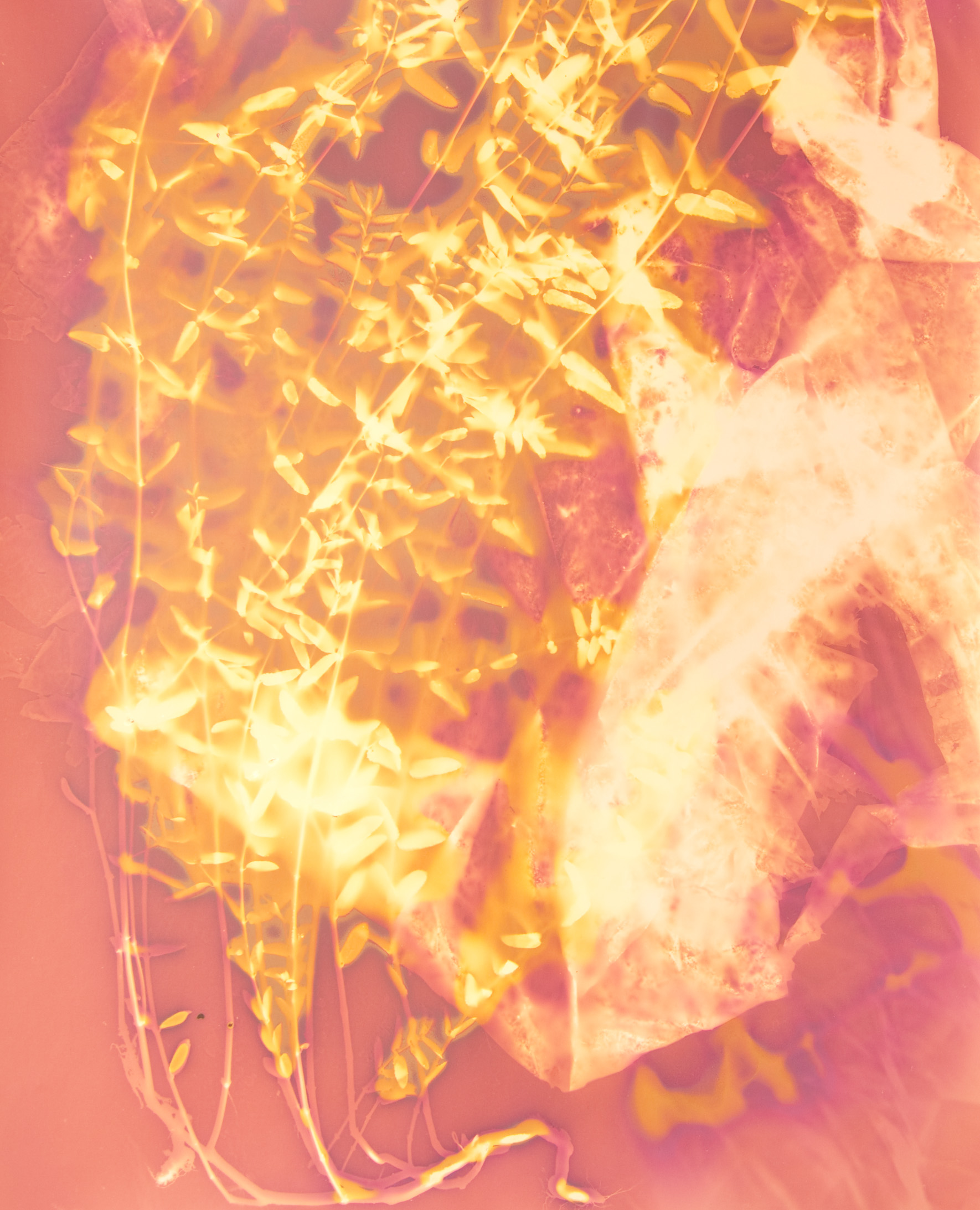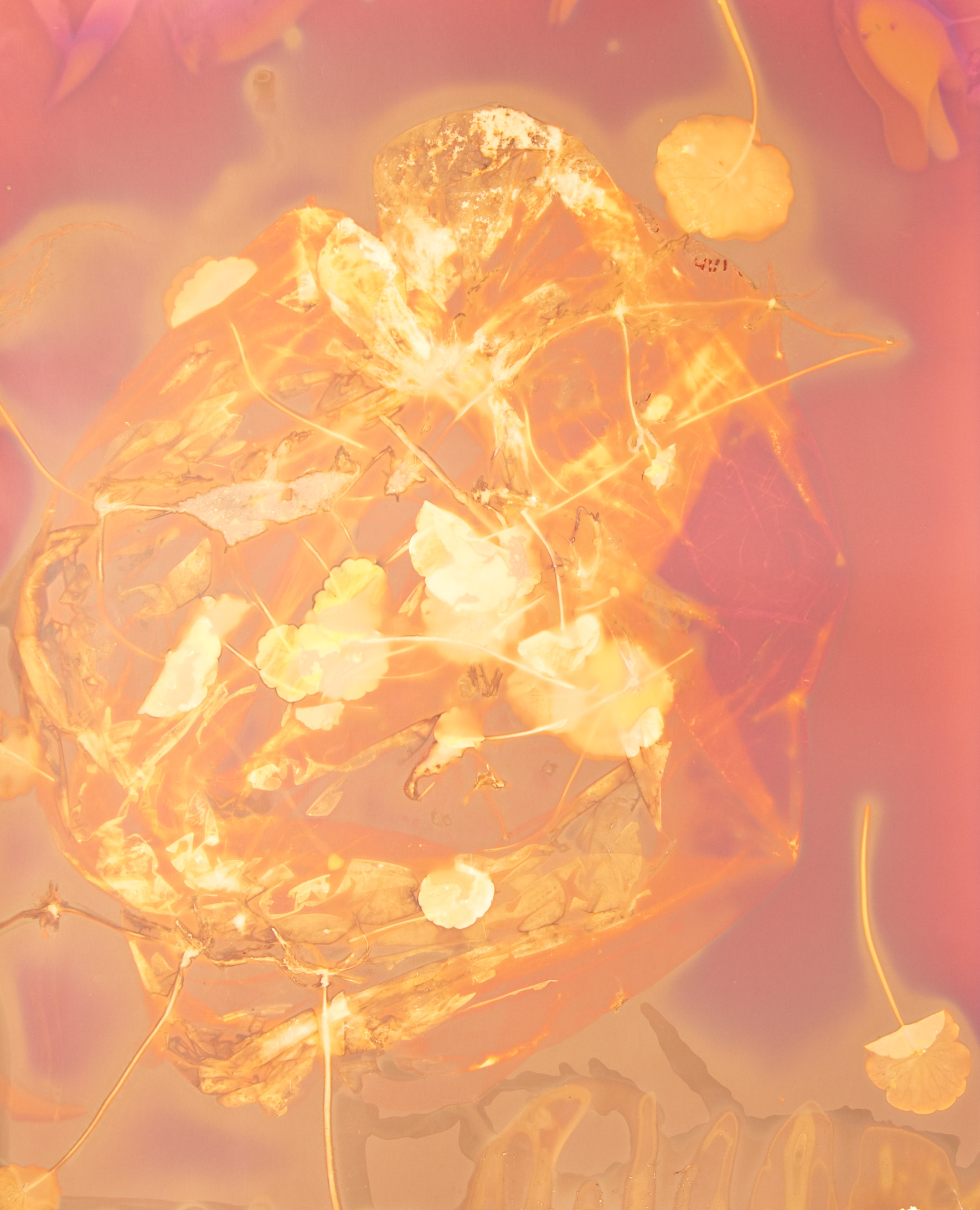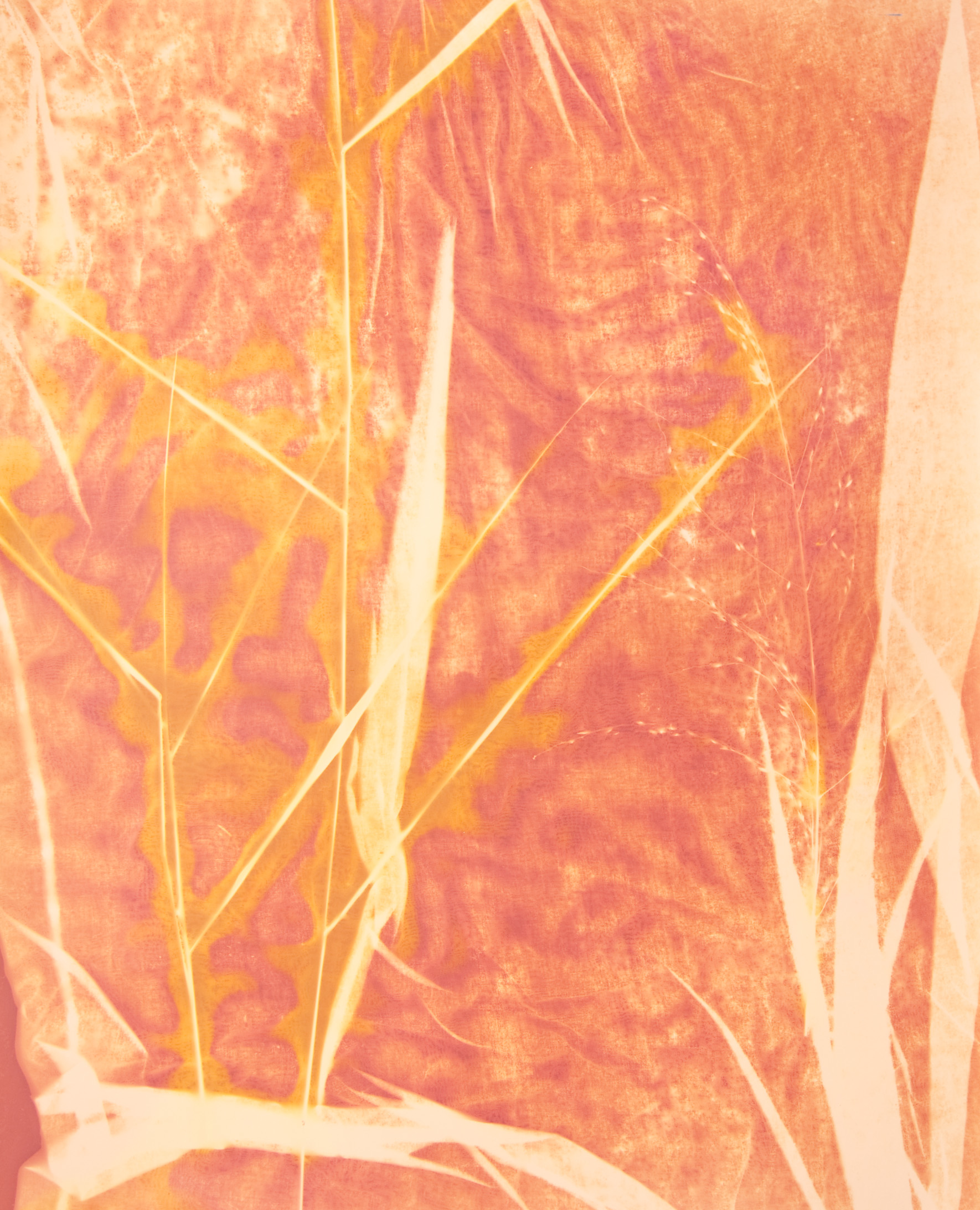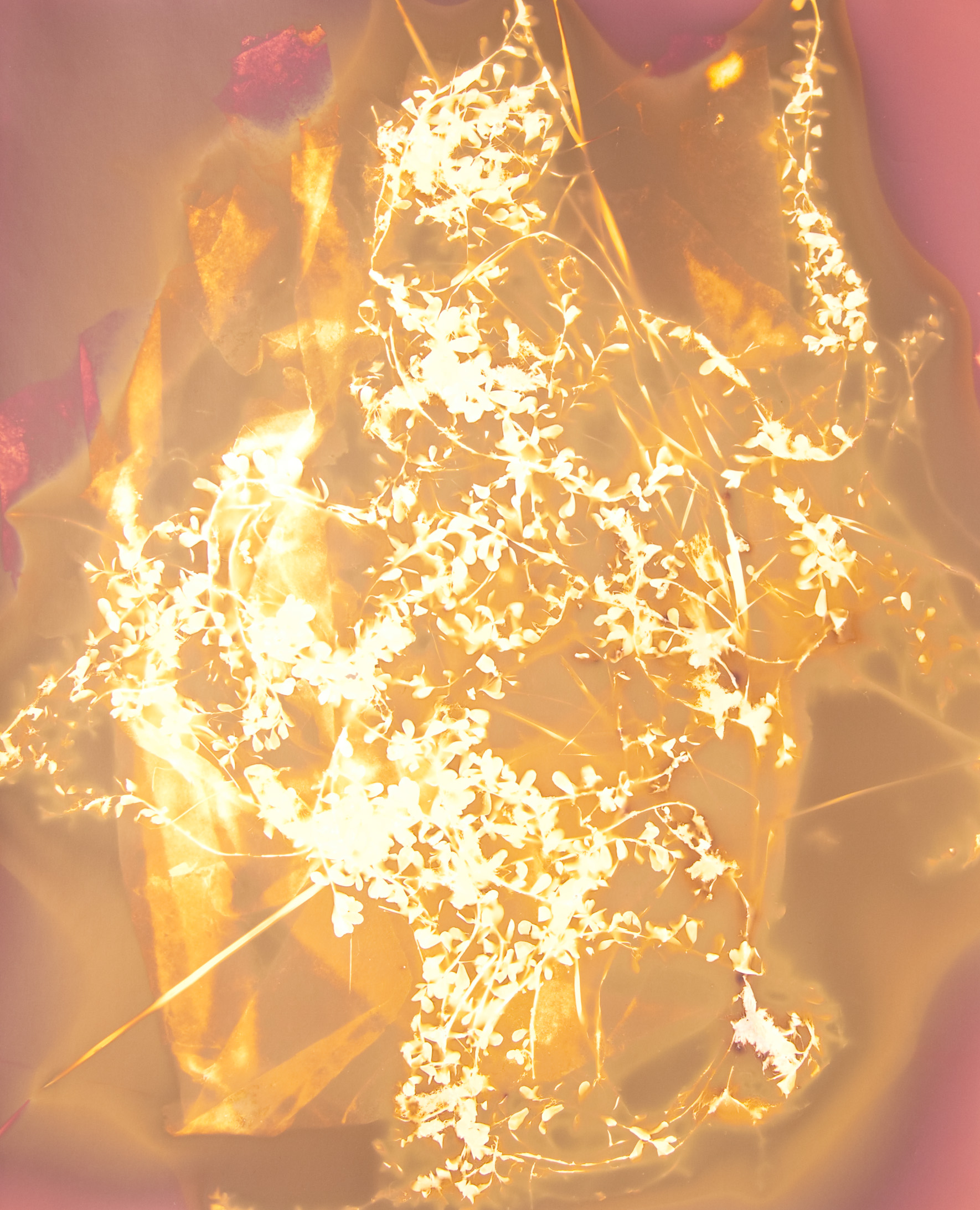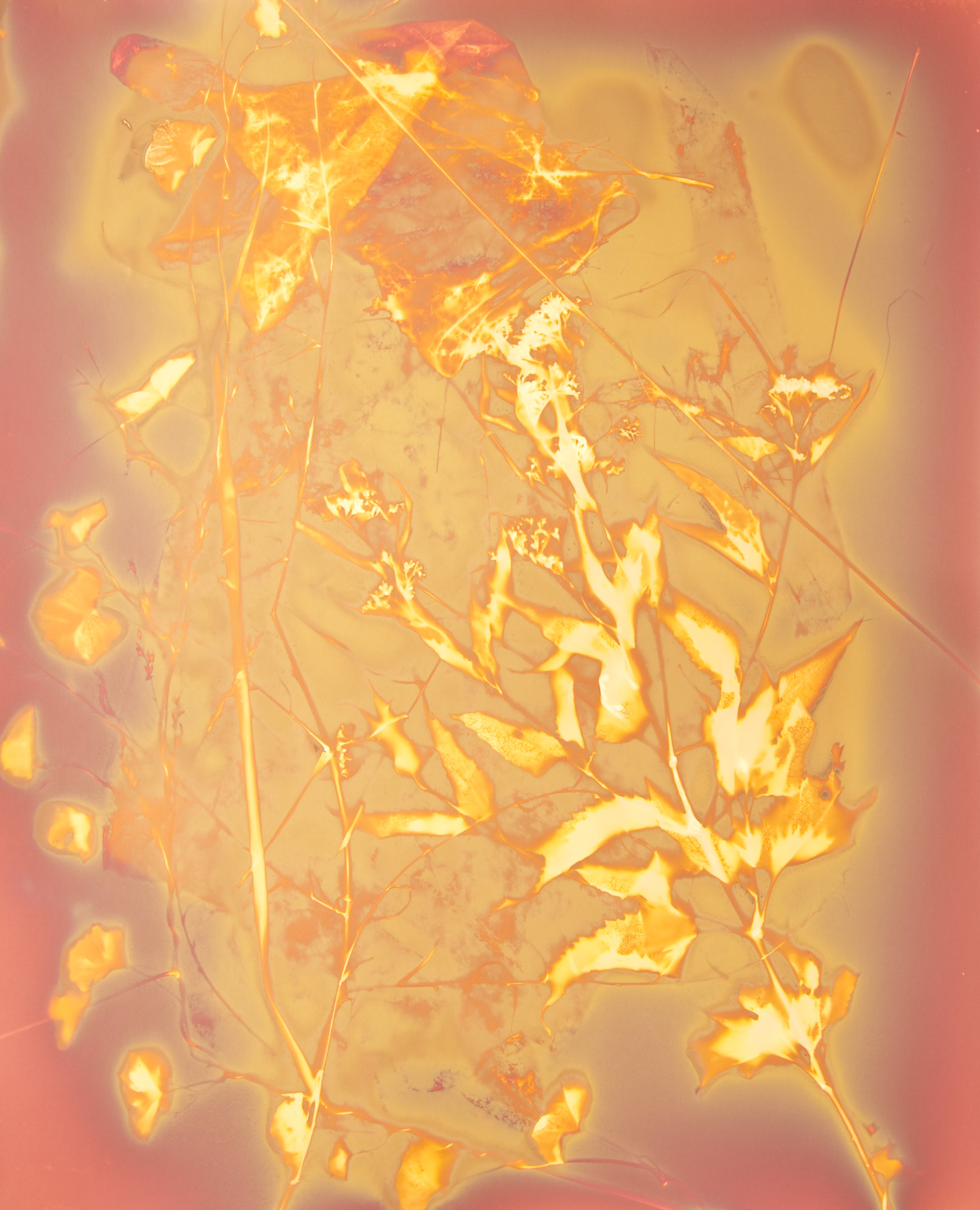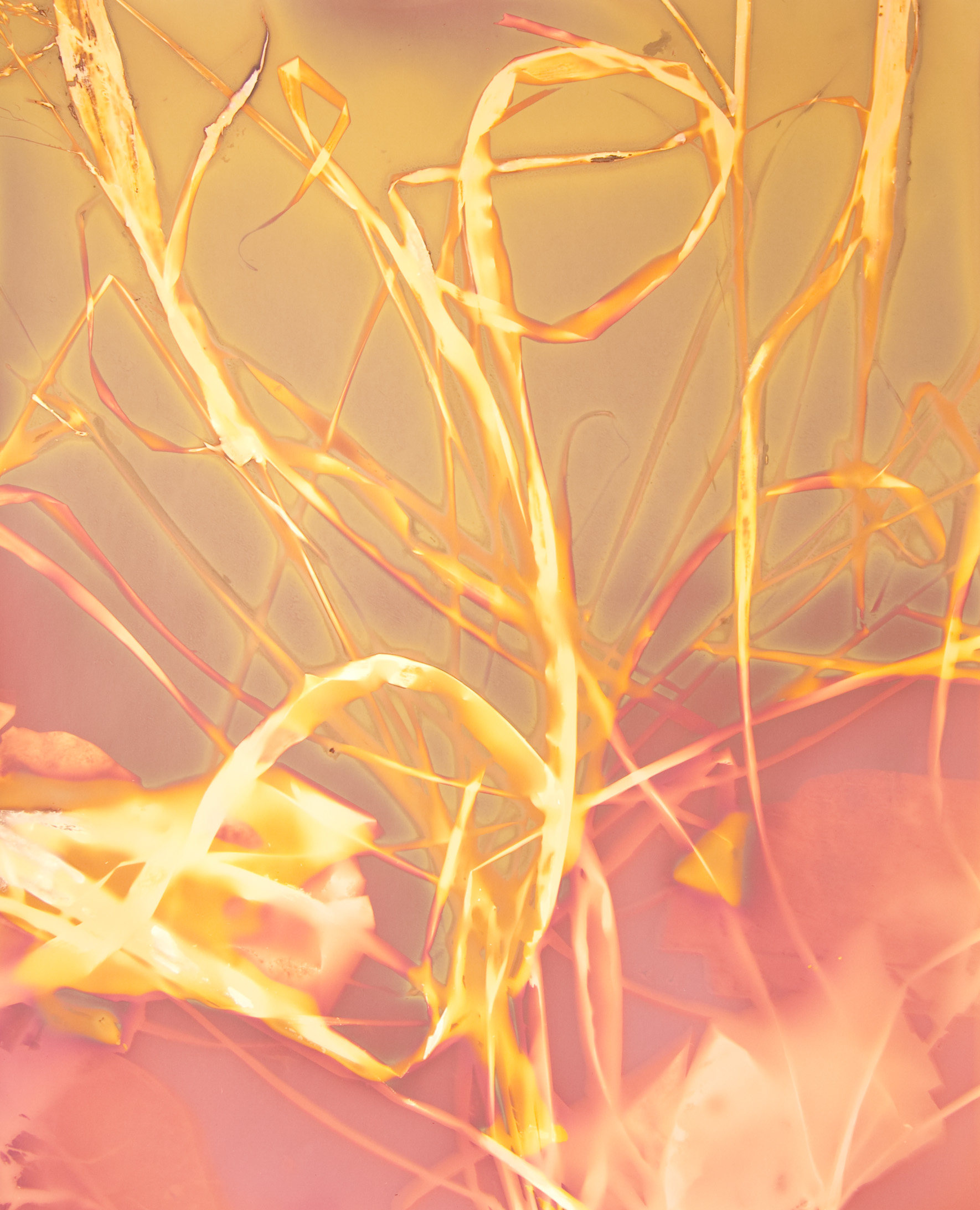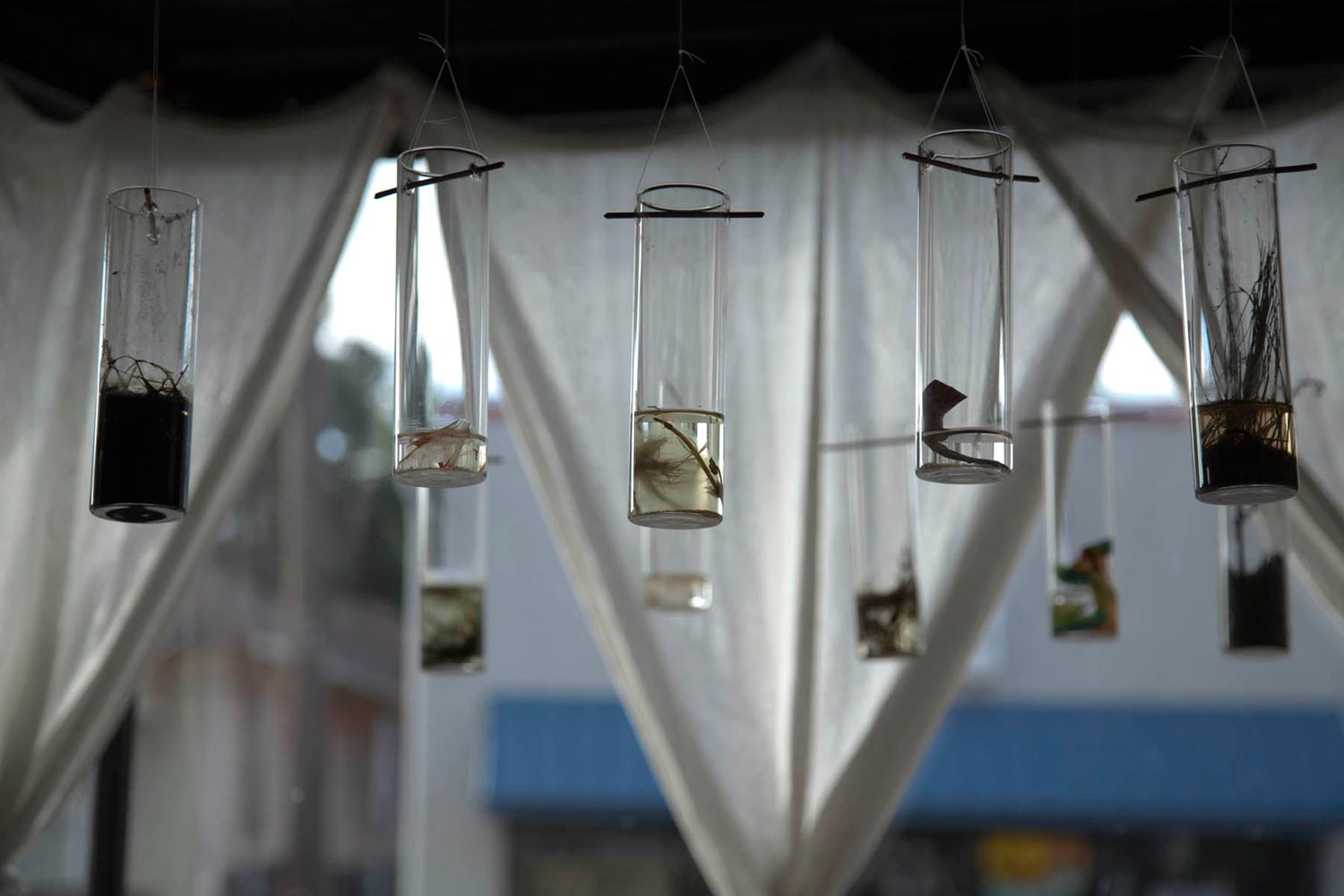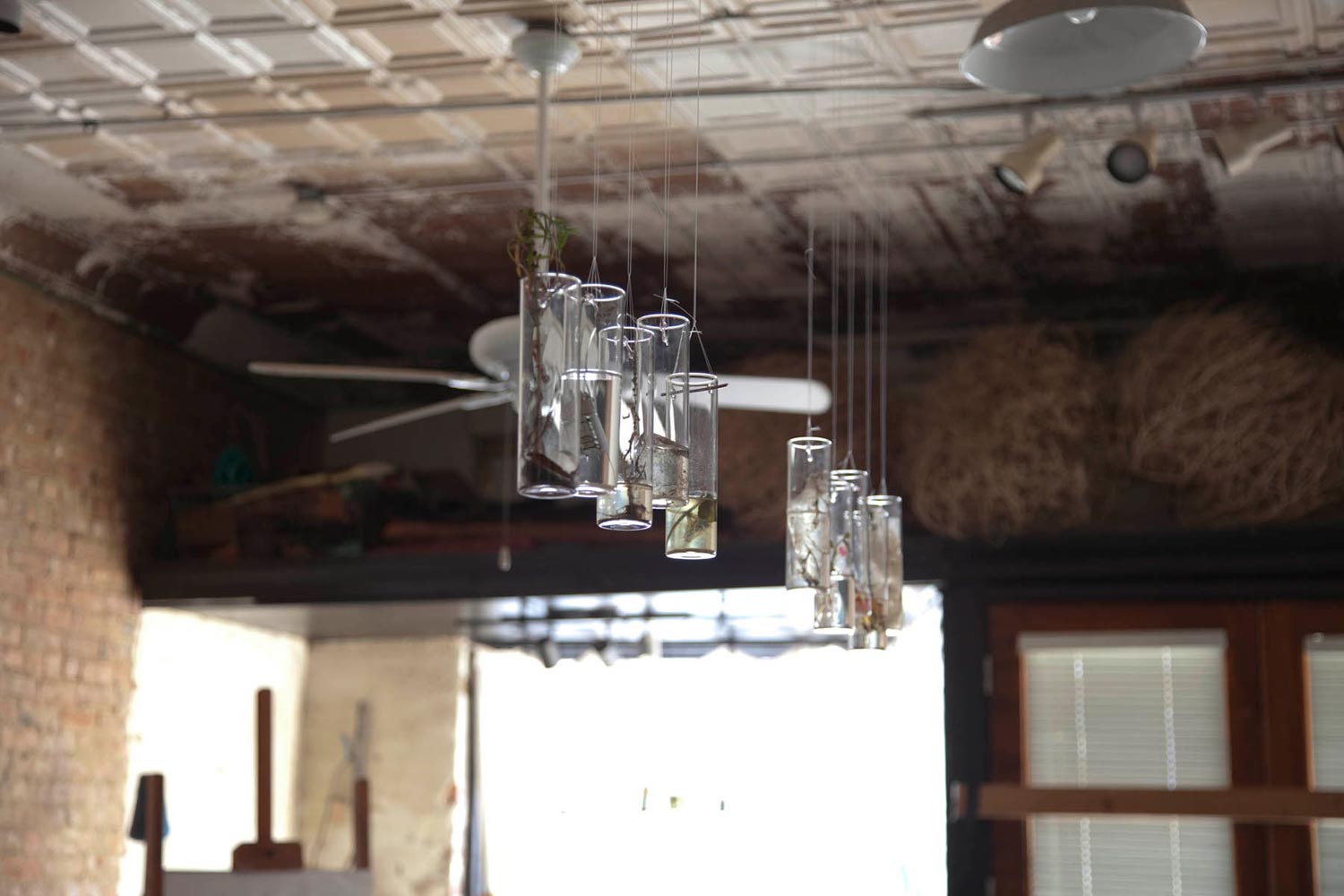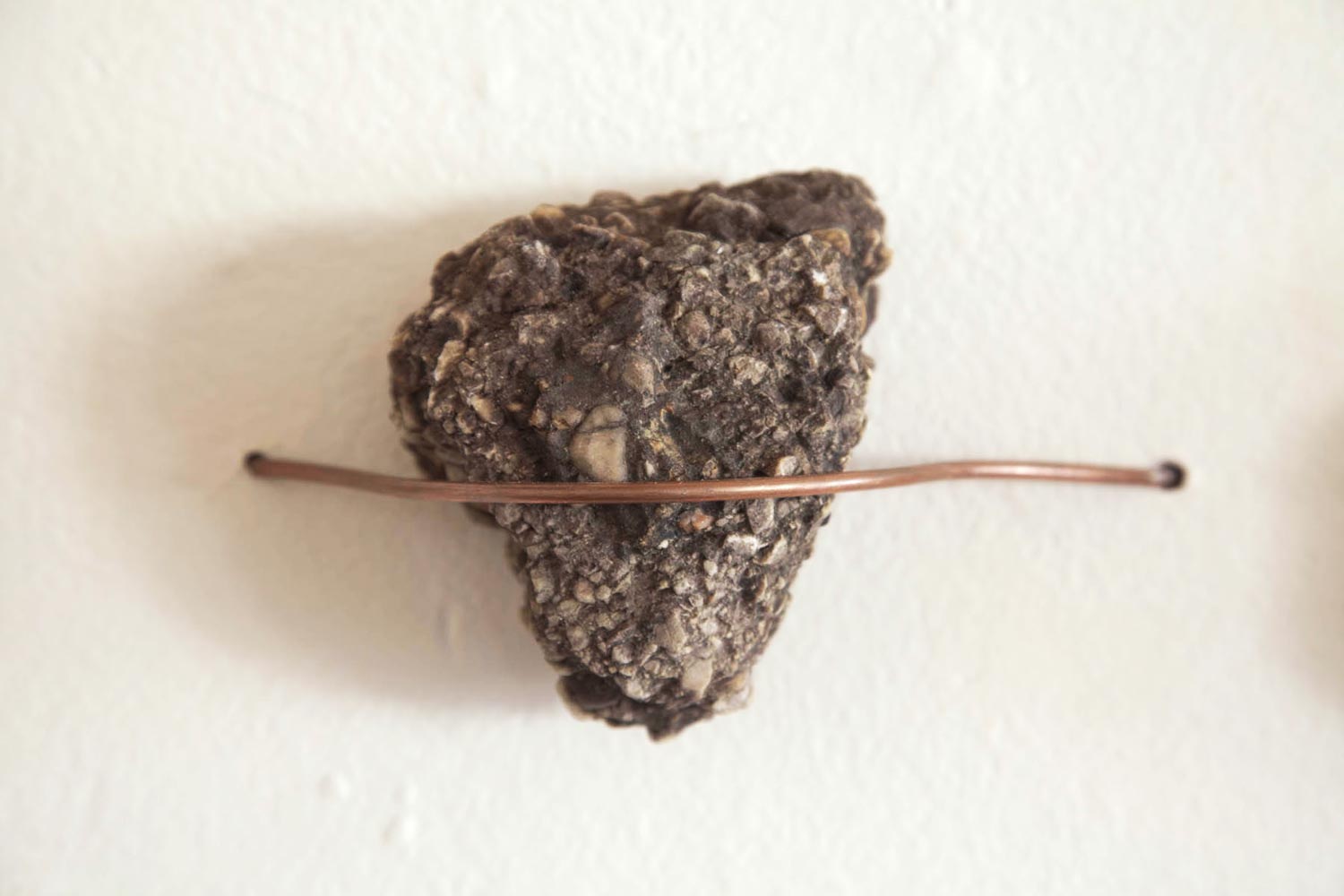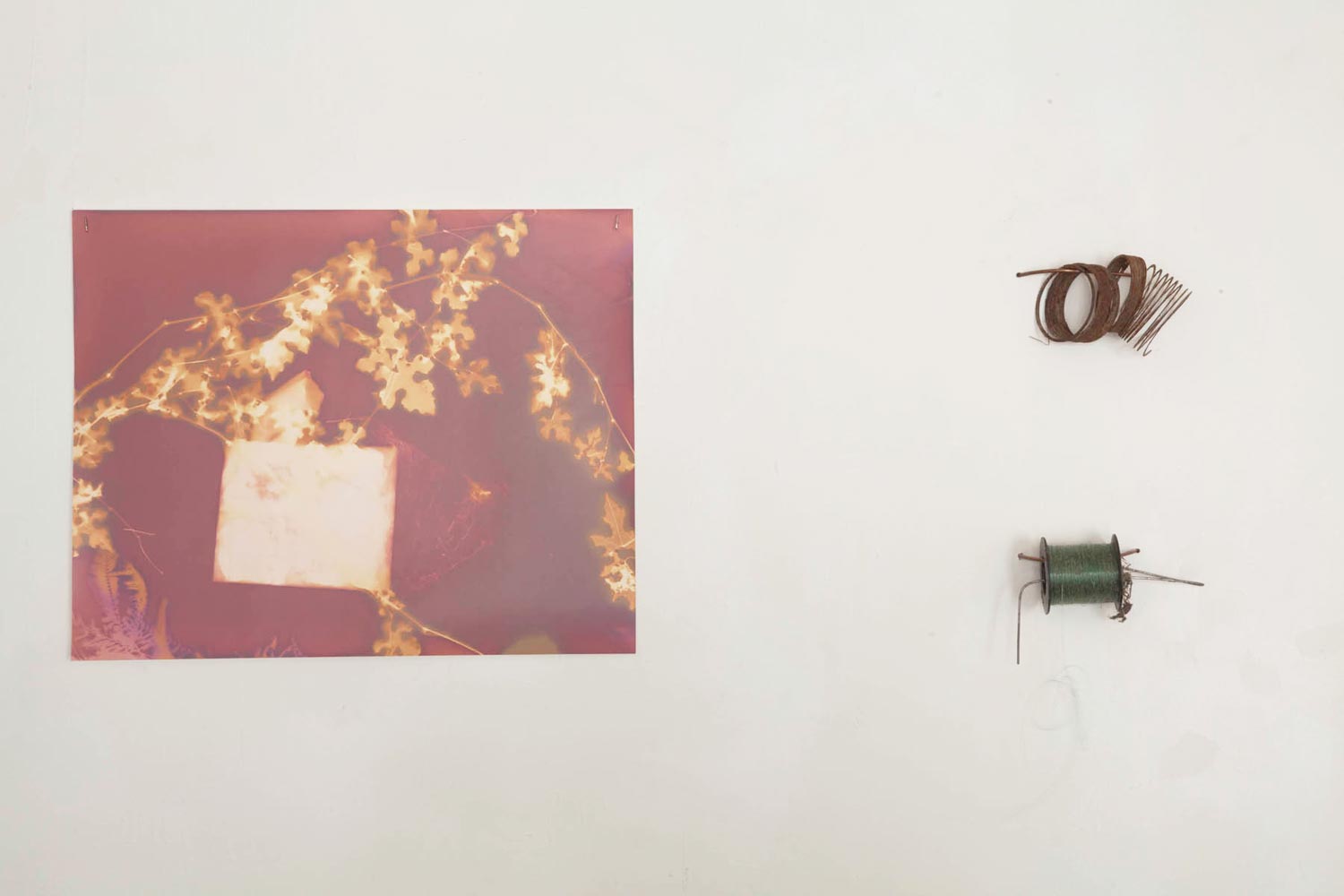Invasive is a survey of an unassuming suburban creek a the point of transition between city governance and the natural environment, where concrete and dirt meet. This area has become a poignant litmus test, representative of waste, consumption, and dismissal. These images present the blending of inorganic and organic forms to create richly textured indexes of the landscape as influenced by human agency.
The land here is deceptively beautiful as the sound of the creek-water falling from concrete to rocks echoes off of the trees and rushes. However, attentive observation reveals that debris and litter do not merely cover the area but are embedded into the soil. This is a lost space where refuse and earth have become one to create a place that is neither civilized nor wild.
This work includes both lumens and anthotypes, both of which are contacting printing methods using two different chemistries. Lumen prints are made by exposing silver-gelatin darkroom paper to ultraviolet light, or daylight. Plants and detritus are placed directly on top of the silver paper and exposed in sunlight for an exposure that may span twenty minutes to several hours. Anthotypes are a similar process using organic chemistry rather than traditional silver chemistry. For these prints, plants have been crushed and ground into a pulp and their juices extracted. This juice contains the naturally occurring pigments of each plant, and because of the photosynthetic nature of all plant-life, this pigment is light sensitive. This liquid is then painted on to high-quality watercolor paper. Once the paper has dried, the same plants used to create the emulsion are then placed in contact with the paper and also printed in UV light.
These processes result in one-of-a-kind prints which cannot be replicated . By using plants from the specific creek and placing them in direct contact with the silver paper a new artifact is created, one that symbolizes the ever-increasing tension between human habits of wastefulness and the environment. The anthotype in this body of work is made from a hydrilla plant with the permission of the Lewisville Aquatic Ecosystem Research Facility. Hydrilla is an aquatic plant that is invasive to this area and illegal to possess in Texas without a permit. The printing of this invasive species speaks to the invasive and destructive nature of our own thoughtless refuse.
This work was on exhibition at Oil and Cotton: Creative Exchange in the fall of 2013.
